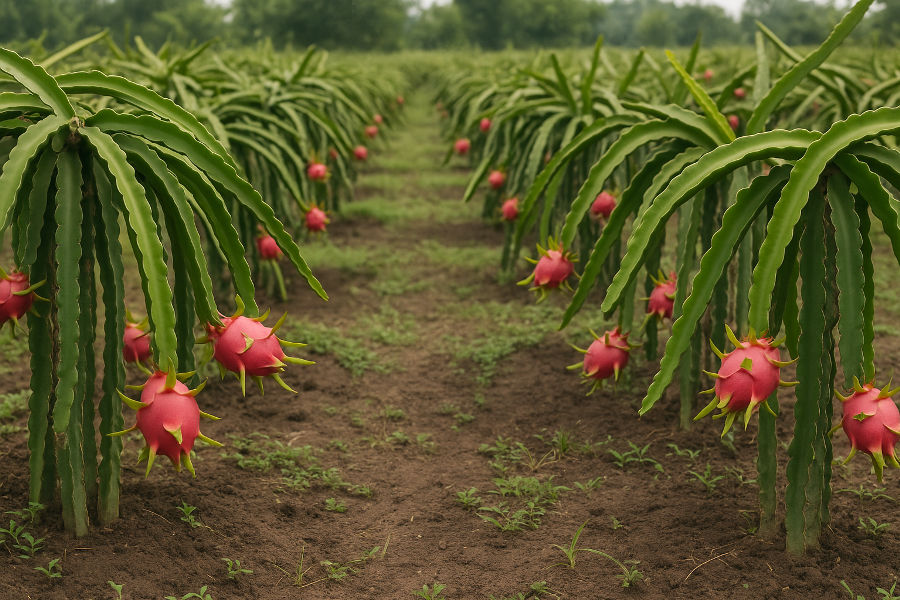Dragon Fruit Farming: Big Profit Crop for Indian Farmers
Dragon fruit farming is rapidly gaining popularity across India due to its high market demand, attractive appearance, and excellent health benefits. Also known as pitaya, this exotic fruit belongs to the cactus family and thrives in arid and semi-arid climates, making it an ideal crop for many Indian regions.
Why Choose Dragon Fruit Farming?
-
High Returns: Dragon fruit has a strong domestic and export market, fetching premium prices.
-
Low Maintenance: It requires minimal water, less pesticide, and is highly drought-tolerant.
-
Year-Round Income: Once established, the plant can produce fruit multiple times a year.
-
Health Trend: Rich in antioxidants, vitamins, and fiber, its demand continues to grow in health-conscious markets.
Key Requirements for Dragon Fruit Cultivation
-
Climate: Thrives in warm temperatures (20–35°C) and tolerates drought well.
-
Soil: Well-drained sandy loam to loamy soil with pH 5.5–7 is ideal.
-
Support Structure: Requires strong vertical supports (concrete or wooden posts) for climbing growth.
-
Propagation: Mostly grown from stem cuttings for faster yield.
-
Irrigation: Drip irrigation is efficient and promotes healthy root development.
Farming Tips for Success
-
Ensure proper spacing for good sunlight and air circulation.
-
Apply organic compost and balanced nutrients regularly.
-
Prune excess branches to boost flowering and fruit size.
-
Protect flowers and fruits from birds and pests using netting.
Yield and Profitability
A well-maintained dragon fruit plantation starts yielding in the first year and reaches peak production by the third year. Farmers can harvest up to 10–15 tons per acre annually, depending on management and variety. With proper marketing, dragon fruit farming can provide net profits of ₹3–5 lakh per acre.
